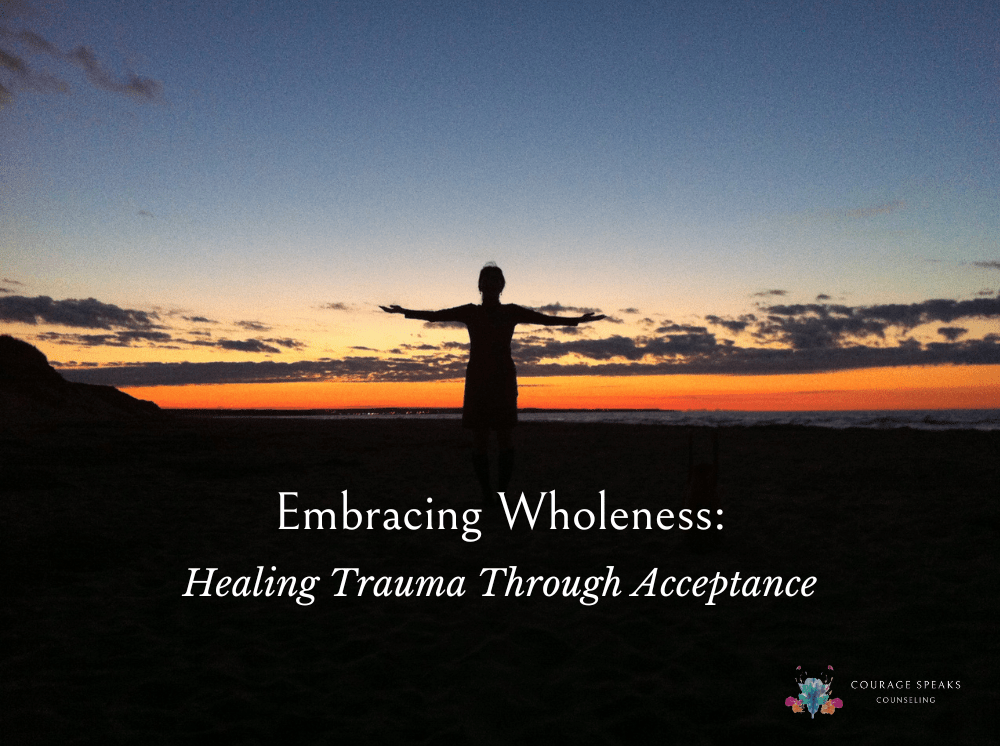
Before, After, and Now: Healing After Life-Altering Events
Healing isn’t about returning to who you were—it’s about learning to live fully in the present and trusting the unfolding of your journey after life-altering events.

In a world that often urges us to fix our flaws and improve ourselves, the concept of “there’s nothing to fix” can feel like a breath of fresh air, especially for those navigating trauma and complex trauma. It challenges the pervasive belief that everything about us needs to be corrected and instead invites us to embrace a deeper sense of acceptance and wholeness. Let’s explore what it means to adopt this perspective within the context of trauma recovery and how it can foster profound healing and growth.
Trauma survivors often internalize a sense of brokenness or inadequacy, perpetuated by a society focused on quick fixes and superficial improvements. Embracing wholeness means recognizing that our experiences, scars, and vulnerabilities are integral parts of our journey—they don’t need to be erased or “fixed.” It’s about stepping away from the relentless pursuit of perfection and embracing ourselves as complete, resilient beings.
Trauma can leave lasting emotional wounds that challenge our sense of self-worth and identity. Embracing wholeness involves accepting our imperfections and scars as sources of strength rather than symbols of weakness. It’s about honoring the courage it takes to navigate life’s challenges and recognizing that our scars tell stories of survival and resilience.
Self-compassion is a vital tool in healing from trauma. It’s about treating ourselves with the same kindness, patience, and understanding that we would offer to a loved one in pain. When we acknowledge that there’s nothing to fix, we create space for self-compassion to flourish. It allows us to be gentle with ourselves during difficult moments and to recognize our inherent worthiness of love and acceptance.
Trauma often disrupts our ability to be present and fully engage with life. The notion that “there’s nothing to fix” encourages us to embrace the present moment—accepting ourselves and our circumstances as they are right now, without judgment or the need for immediate change. This mindfulness fosters a deeper connection with ourselves and the world around us, allowing us to experience moments of joy and peace amidst life’s challenges.
Authenticity is key to healing from trauma. When we embody the belief that there’s nothing to fix, we create an environment where genuine connections can thrive. It enables us to relate to others from a place of acceptance and empathy, rather than from a desire to change or be changed. These authentic connections provide a supportive framework for healing and growth, allowing us to feel seen, heard, and valued for who we truly are.
Embracing wholeness does not imply resignation or stagnation. On the contrary, it’s a catalyst for profound personal growth and healing. By accepting ourselves as whole beings—flaws, scars, and all—we lay the foundation for genuine transformation. This journey of self-discovery and acceptance empowers us to reclaim our narratives, rewrite our stories, and embrace life with renewed courage and resilience.
Embracing wholeness and recognizing that “there’s nothing to fix” is a radical act of self-love and acceptance, especially for those healing from trauma. It challenges us to let go of unrealistic expectations and embrace our inherent worthiness. By adopting this perspective, we create space for profound healing, growth, and authentic connections in our lives. It’s a journey that honors our resilience and empowers us to live fully and authentically, scars and all.
Embracing Shadows, Illuminating Hope,
Chelsey Fjeldheim, LCSW
Empowering Souls on the Path of Healing
Copyright © 2024 Chelsey Fjeldheim, Courage Speaks Counseling

Healing isn’t about returning to who you were—it’s about learning to live fully in the present and trusting the unfolding of your journey after life-altering events.

Healing isn’t about fixing yourself. It’s about staying present, feeling fully, and letting transformation happen without force.

There’s no perfect time to start therapy, but if you feel stuck, disconnected, or overwhelmed by change, it might be the right time to explore it.

Because you matter. You are important. You are worth it.